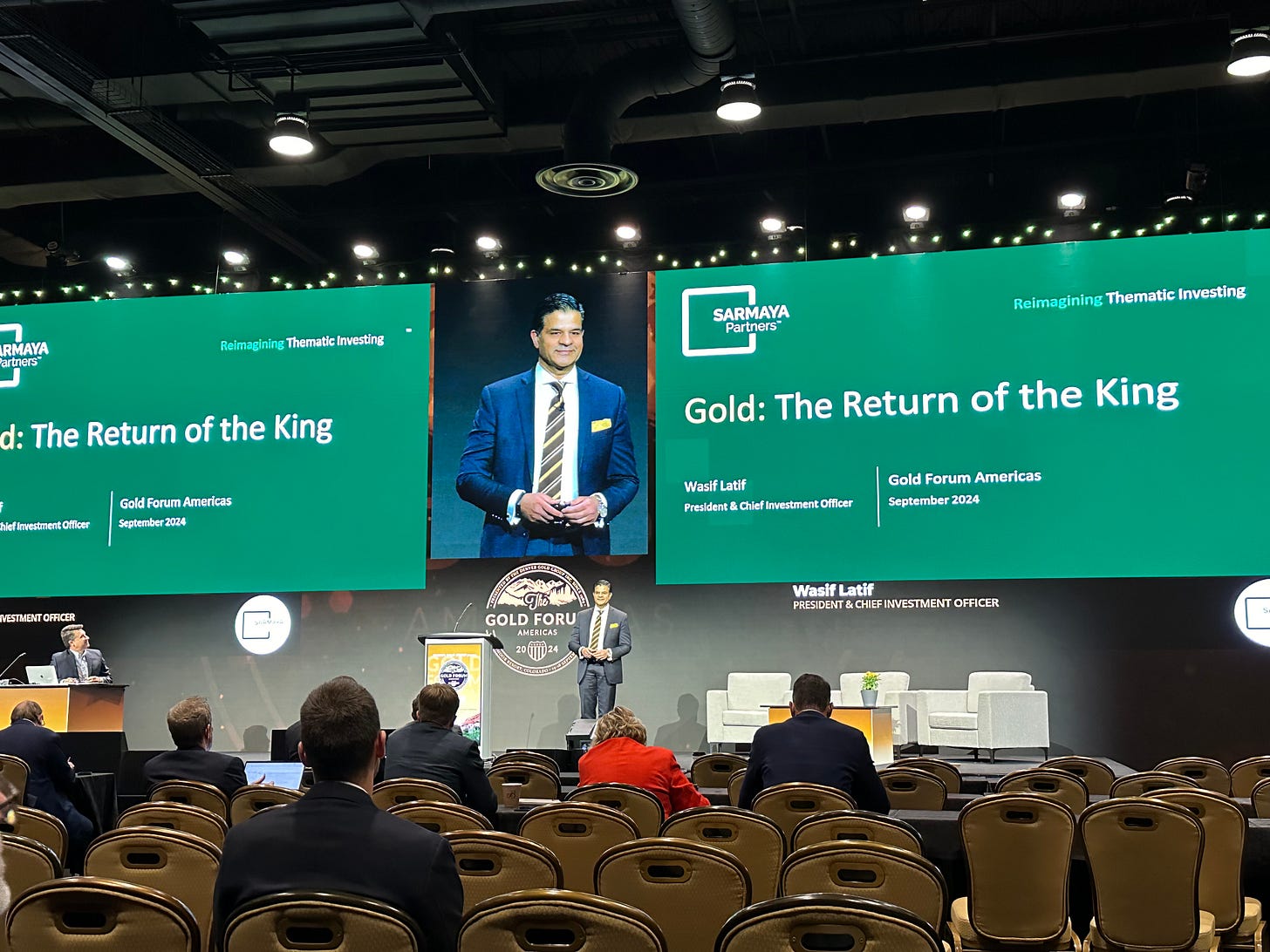The case for a new commodities super cycle
When will generalists return to the sector?
Sarmaya Partners president and chief investment officer Wasif Latif believes reluctant asset allocators will be lured back into gold and other commodities as prices rise.
Delivering a Tuesday lunchtime keynote at the Gold Forum Americas in Colorado Springs, Latif said Sarmaya believes the market is at the tail end of the mega-cap tech boom.
“I have a lot of friends who invest in that space, and all of those folks, in their minds, this will never end, but history tells us it eventually does,” he said.
“And what's interesting is, as it is ending, or as it is peaking, the next one begins, and what is the next one to us? The next one has already begun.”
Latif said the pandemic changed the way the world operated and thought about life.
“But also from an asset price perspective, from the interest rate cycle, the 40-year bull market in bonds, led by declining interest rates and declining inflation, ended, and as a result of that, we entered what we think is the new commodity super cycle that really began in earnest around 2021 with oil leading the way and then gold following as well.,” he said.
“And we're calling it the return to tangibles.”
Latif said the pandemic was also a wake-up call on the need for energy.
“In addition to oil and gas, uranium is going to play a big part,” he said.
“Not only are we having a gold renaissance, we're also experiencing a nuclear renaissance, where the world is coming back to that, and that's going to be a big part of what we use.”
Looming infrastructure spending will also benefit commodities, as will artificial intelligence and data centres.
“Copper is a big part of that, and we invest heavily in copper as well, but not only because of that short term trade, if you will, but we're investing in it from a long-term perspective,” Latif said.
Latif said government spending and geopolitical risk was supportive for gold.
Sarmaya’s view is that inflation isn’t “dead yet”.
“We think that we're experiencing something similar to the 1970s where the Fed increased rates, inflation came down, and then they thought it was the all-clear, and for a variety of other reasons, including politically driven reasons, they began to cut rates, and you saw gold resurging,” Latif said.
“It seems to us that there's this high risk out there that the Fed is going to lower rates and inflation is going to come back.”
Latif said the financial risks were clear given the US and other Western countries were “flirting with high levels of debt”.
Latif said it didn’t matter who was in the White House and that politicians would continue spending in a populist-driven world.
“The other thing to think about is, whenever the economy goes into recession, the deficits are in good shape, and that's when the government steps in, because the private sector is receding,” he said.
“Well, we're already in a high deficit environment as the risk of a recession is increasing.
“Now we have crossed the Rubicon in so many different metrics, it's countless.”
Back on gold, Latif said the countless headlines about record prices was attracting attention.
“We think that the price movement is enticing a lot of investors to look at it and come in,” he said.
“The headlines are forcing people to pay attention and look at it and that could mean the tactical money, the hedge fund money, the fast money, is beginning to come in, as well as some retail money.”
Latif said many asset allocators were yet to come into the space.
“For them, it's a tactical trade, and what drives a lot of tactical decisions? It's the price,” he said.
“So as the price continues to move higher, for all of the macro, top-down factors that we've talked about, that will continue to drive this higher and higher.
“Bull markets are born in pessimism, they grow on scepticism, they mature on optimism, and they die on euphoria.
“We think we’re in the scepticism part because there's still a lot of scepticism. But the price will pull reluctant allocators in.”


